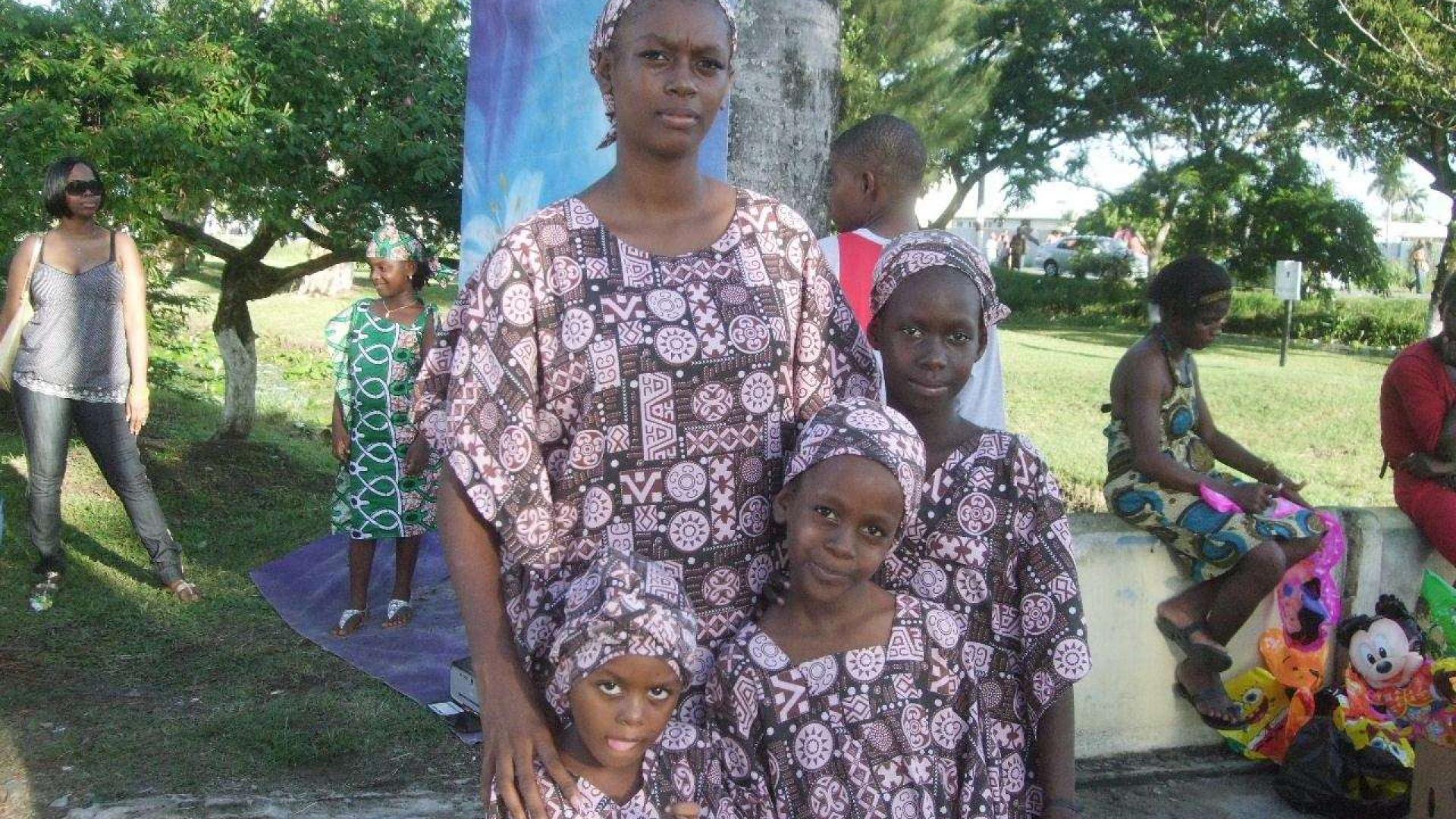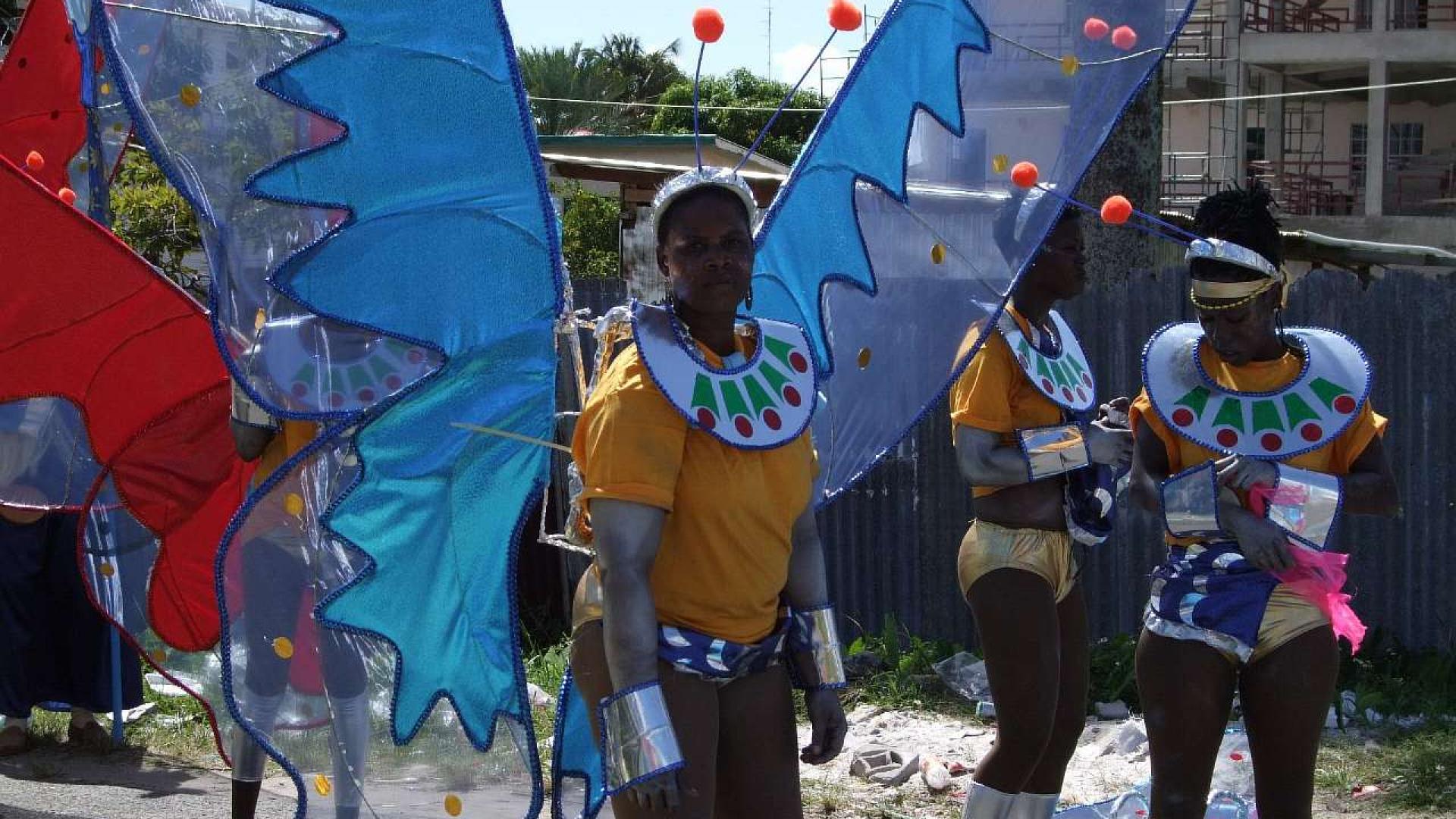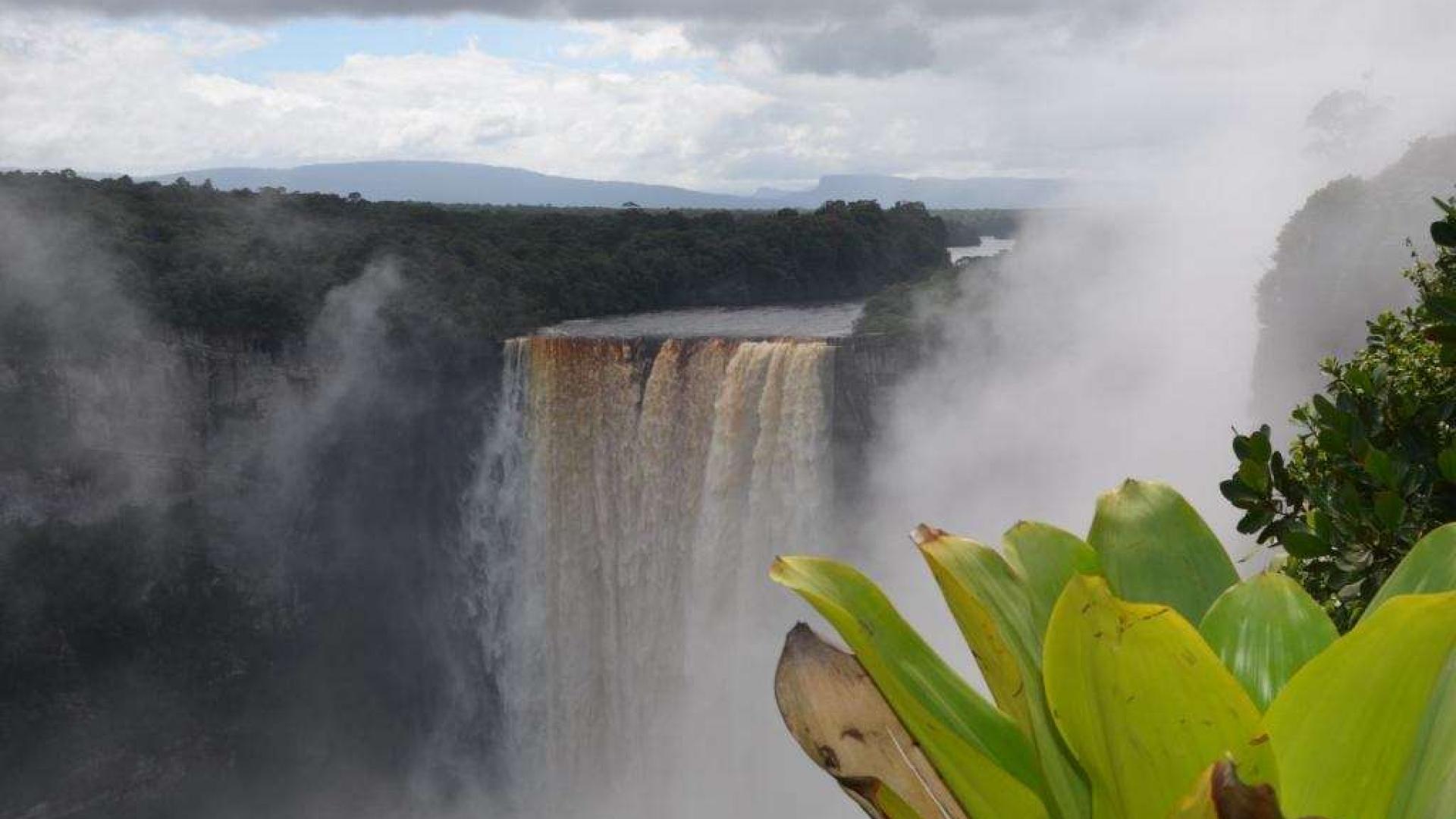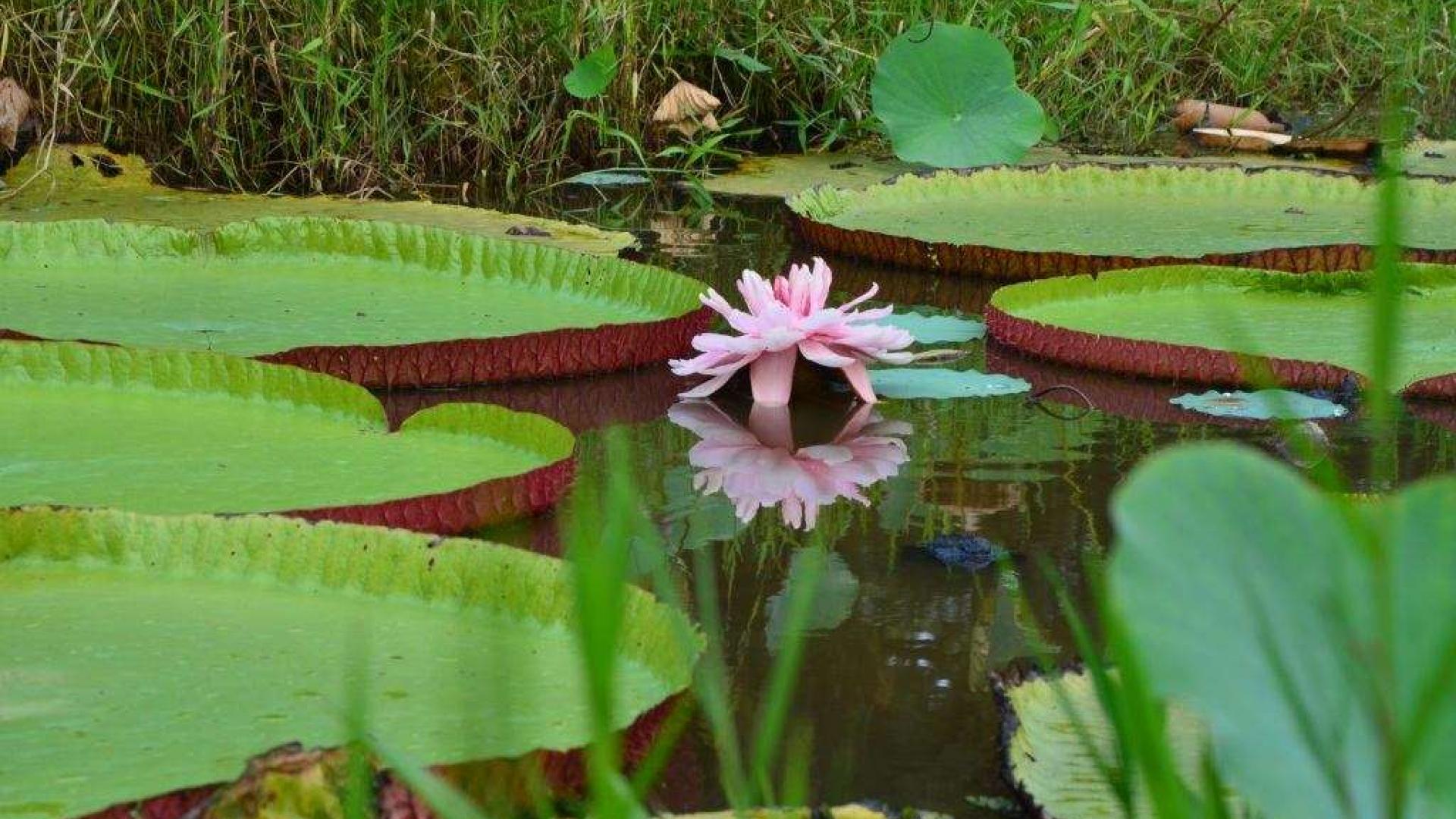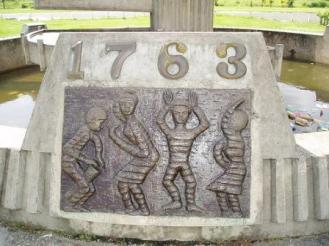The struggle against slavery in Guyana.
Plantation slavery grew with the expansion of plantations.  The main objective of the planters had to squeeze as much as possible the forces of the slaves. Very little has been examples of better living conditions for slaves. On the contrary, the history of slavery is replete with examples of ill-treatment of slaves.
The main objective of the planters had to squeeze as much as possible the forces of the slaves. Very little has been examples of better living conditions for slaves. On the contrary, the history of slavery is replete with examples of ill-treatment of slaves.
Often, due to ill-treatment occurred rebellion against slavery, and even some slaves escaped to the woods. Those who were caught and died a cruel death, in order to intimidate the remaining on the plantations, in the event that they, too, conceived to escape.
Movement against slavery.
In the late 18th century, slavery in America was the cause of the resistance movement.
In  1762 the Dutch colony of Berbice in an uprising of 36 slaves, and slaves. However, the governor of Van Guggenheim sent to Berbice police forces, and the uprising was crushed. Some slaves managed to escape, but at least one of them was executed.
1762 the Dutch colony of Berbice in an uprising of 36 slaves, and slaves. However, the governor of Van Guggenheim sent to Berbice police forces, and the uprising was crushed. Some slaves managed to escape, but at least one of them was executed.
However, the repressive plantation management practices have brought the situation to boiling point. And after several months of February 23, 1763 started a more organized rebellion against slavery. This uprising became known as Berbisskoe slave revolt.
Initially, the rebellion broke out on the plantation Magdalenenburg belonging to the widow, Mrs. Vernesobr. The slaves killed the manager, the owner of the plantation house burned down and moved to the neighboring plantations. Plantation Korantayn many slaves joined the rebellion.
Very soon, the slaves were organized as a fighting force under the leadership of Kofi, a slave from the plantation Lilienburg, who also joined the rebellion. Coffey was brought to the plantation of this boy and was raised there as a cooper.
Hearing of the rebellion, the governor sent a van Guggenheim rebel plantations all available military forces, which he had before. And it was 12 soldiers and 12 sailors from one of five ships in the harbor. While the entire population of the colonies consisted only of 346 whites (including women and children) and 3833 slaves. Mulatto, who by this time began to appear in the colony, during the rebellion took the white side.
The uprising, which began in private estates, soon spread to all the plantation colonies of Berbice. The rebels moved to the capital of Berbice Colony - Fort Nassau on the road and burned houses and killed the white men and women. Along the way they released the other plantations, the slaves who joined the rebels seized weapons and gunpowder plantation owners.
White had to seek refuge on the five ships anchored in the waters of the River Berbice, as well as at Fort Nassau, as well as in a brick house on the plantation Pirbum, about 70 miles upstream on the left bank. Some fled in panic through the woods into a colony of Demerara.
In addition, the white has fallen dysentery, which reinforced the panic in their ranks.
March 3 rebel forces number 500 under the leadership of Kosala attacked well-fortified brick house on the plantation Pirbum. The rebels tried to set fire to the house, but managed to extinguish the fire with white. Negotiations began, after which the rebels were allowed to escape unscathed from the white house and go to their ships. But during the retreat of white rebels opened fire, killing many of them and took many prisoners. Among the captives was the wife of a plantation manager Beristin that Coffey did his wife.
Coffey declared himself governor of Berbice and chose the deputy Akara to maintain discipline and unit activity in the colony, the organization of the farm for food. Other leaders, such as Atta and Akkarbe obey military discipline.
But from the very beginning of the rebels there have been contradictions.
Many believed that the beating of white, they can do whatever they want. Small groups of looting villages, others dressed in European clothes, stolen from the homes of white, and drank rum.
A number of Creole slaves who were born in the colony, did not support the uprising, and they left the plantation, not affected by the rebellion.
The collapse of the rebellion.
At this time, White could not reach a consensus whether to keep them captured by the rebels to organize the plantation or the suppression of the uprising. Spores were stopped only when help arrived from Suriname at 100 soldiers. Governor Wang Guggenheim soldiers divided into two parts, one part left to defend Fort Nassau, and the second part went to retake the captured plantations.
Coffey knew that war with the white section and offered no prospects for Berbice white and black areas.
The correspondence between the former governor of Berbice Van Guggenheim and the current Governor of Berbice Coffey began with the April 1763 and lasted a long time. Guggenheim van pulled in while waiting for reinforcements and pretended to consider the proposals of Coffey.
Finally, May 13, 1763 in Berbice ship arrived with 158 soldiers.
By this time, Coffey lost patience, and on May 13 was scheduled to attack the camp of slaves of whites. Force of slaves numbered 2,000, while the forces of white - 150 armed soldiers and 3 vessels that support the upcoming regular firing of heavy we
apons.
The attack was repulsed.
Coffey again proposed to divide the territory in black and white. He wrote: "In any case, we will not be slaves again."
But at the same time in the ranks of black destructive processes taking place.
Many were dissatisfied with the command of Coffey, who was a "domestic servant", split into groups and clans undermine the rebel forces.
It should be noted that among the Dutch soldiers also were deserters, some of which are captured by the rebels. Coffey used them to train their troops.
Nevertheless, the internal contradictions of destroying the rebel forces.
Authorities seized the rebel camp in Atta. Coffey killed his close supporters, and he shot himself.
By this time, to help all the new white arrived reinforcements.
From Holland came in 1763 soldier. White went on the offensive and control was returned to the plantations. A large number of Africans surrendered, some fled into the woods. Few organized resistance, but were suppressed by Dutch troops. Atta was cap
tured.
Between March and April 1764 continued repression of the rebels.
40 people were hanged, quartered 24, 24 were burned. The rest were returned to slavery, and sent back to work on plantations.
In the history of slavery slave uprising in Berbice has a special place. It represents the first serious attempt to oppose slavery, to win freedom.
It's not just the first attempt to revolt against slavery in Guyana, but the first attempt in the history of slavery in all of South America.
- Log in to post comments

